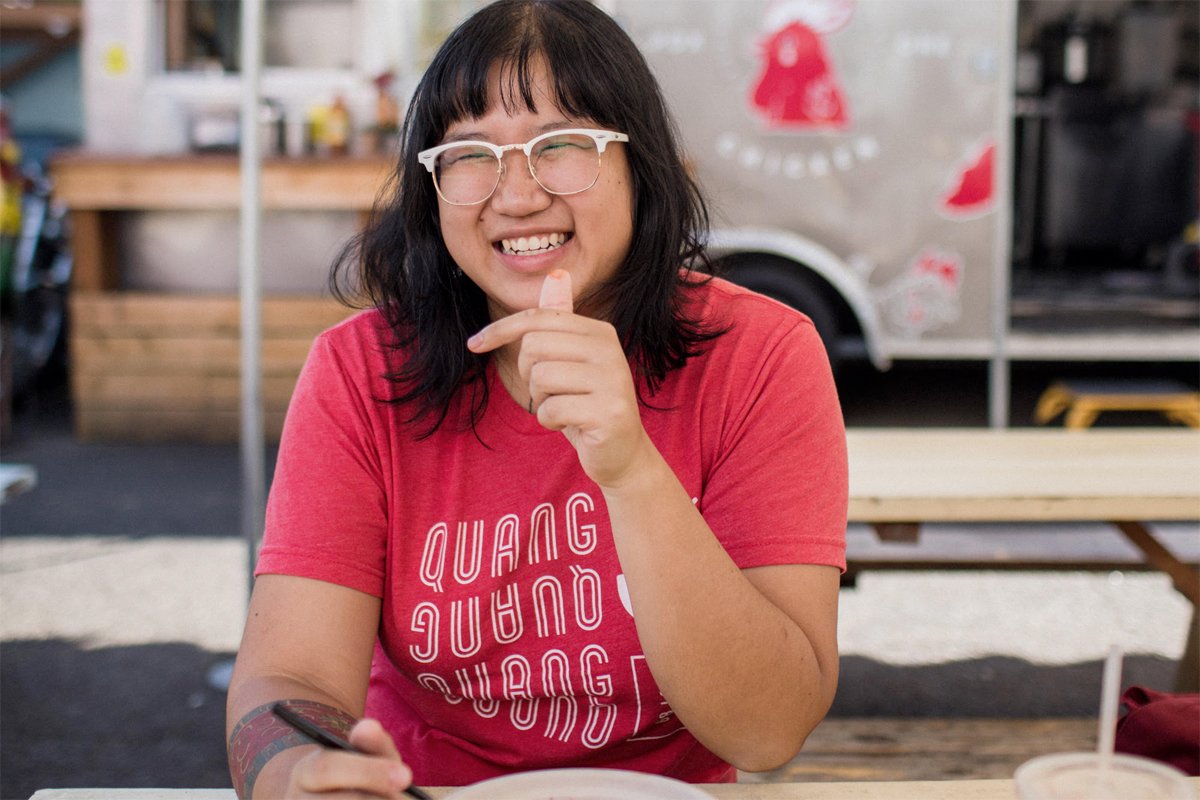
A version of this article originally appeared in The Deep Dish, our members-only newsletter. Become a member today and get the next issue directly in your inbox.
Soleil Ho spent four years in the role of restaurant critic for the San Francisco Chronicle before becoming a broader cultural critic for the publisher earlier this year. And while Ho, who uses they/them pronouns, did indeed visit restaurants and write about the experiences they had there, that was often where the similarity between their work and more traditional restaurant criticism ended.
Instead of stopping at the flavors, service, and ambiance, their columns often aimed to broaden readers’ awareness of everything from the intention behind the business and the way it treated workers, to the role it played in preserving or pushing cultural boundaries.
And while Ho—who founded Racist Sandwich, a podcast that delved into the politics, race, and identity within the broader scope of food and restaurants, before moving to the Chronicle—has had their gaze firmly fixed on the Bay Area the whole time, their influence has been felt beyond the region. For all these reasons, we figured they’d have some interesting things to say about the future, and the present, of the restaurant.
What made you want to work as a restaurant reviewer for the Chronicle, and what has made you want to expand that role to write other forms of cultural criticism in the last year?
I never planned on becoming a restaurant critic. It was just this thing that happened. From 2016 to 2019, I was really interested in meta-narratives about food. Having been involved in food media and in the restaurant world to a pretty big extent, I was really curious about how we talked about food and restaurants. And I certainly included restaurant criticism in that bucket.
I applied for the job at [the Chronicle] for the experience. I was surprised that they wanted to hire me, and I accepted the job because it seemed to be a really exciting opportunity to see how far I could go in setting certain guardrails for how I wanted to write about restaurants. I was asking: How do you do it in a consistently equitable way? And in a way that de-centers a lot of the a priori assumptions about who goes to restaurants and who’s interested in food media.
It was based on this idea that restaurants and food could serve as cultural texts worth decoding. A wide range of choices being made at all kinds of levels—from governmental to individual—manifest in food culture, and it says a lot about what we want as people, but also what we are told are the limits of aspiration.
So, all of that was included in my vision for the role. And I think it naturally expands to other things, because from the beginning, I was appropriating an analytical lens that has been more readily applied to other types of media and other kinds of material culture. I was zooming into foods, and applying other sorts of principles of analysis to something that had hitherto been maybe underexamined, in my view.
Now you are back to using that wider critical lens. How will your work continue to intersect with restaurants?
It will still intersect with restaurants on occasion. I recently wrote a piece about the first lab-grown meat being served at a restaurant in the United States, which happened to be at a spot in San Francisco, so I went and tried it. And I spent a lot less time writing about the service and the flavors and more time on the big questions about lab-grown meat, like why its funders aspire to recreate animal flesh.
I am still curious about the idea that a restaurant, or really any small or medium-sized enterprise, can be a vehicle for cultural change. Because I think that’s something that many people in food media have to take as an assumption. There’s so much coverage that centers around the restaurant as a locus for change, or as the canary in a coal mine.
